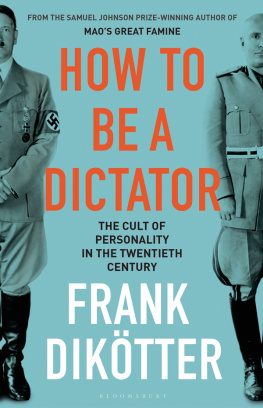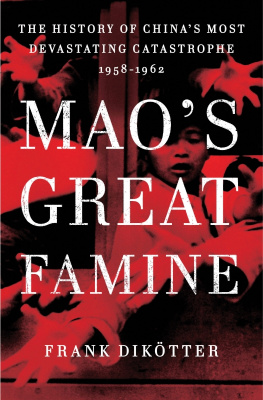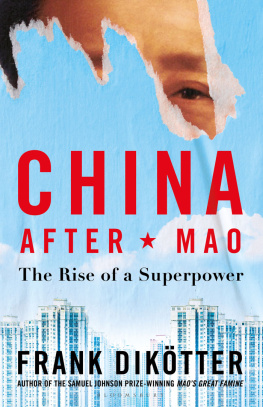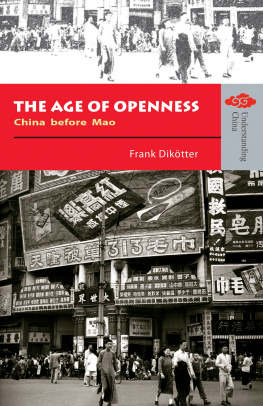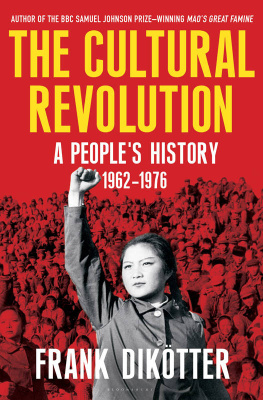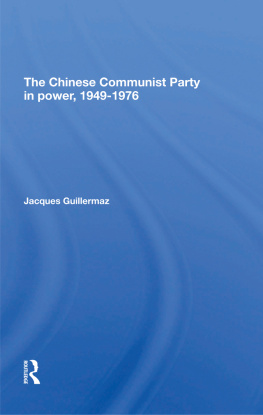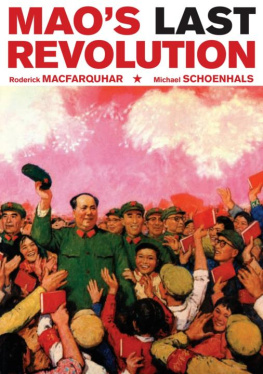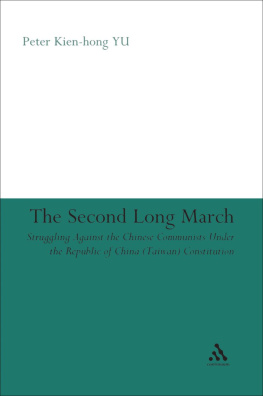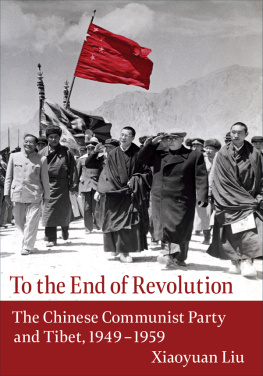
[W]in over the majority, oppose the minority and crush all enemies separately.
Mao Zedong
Contents
The Chinese Communist Party refers to its victory in 1949 as a liberation. The term brings to mind jubilant crowds taking to the streets to celebrate their newly won freedom, but in China the story of liberation and the revolution that followed is not one of peace, liberty and justice. It is first and foremost a history of calculated terror and systematic violence.
The Second World War in China had been a bloody affair, but the civil war from 1945 to 1949 also claimed hundreds of thousands of civilian lives not counting military casualties. As the communists tried to wrest the country from Chiang Kai-shek and the nationalists, they laid siege to one city after another, starving them into submission. Changchun, in the middle of the vast Manchurian plain north of the Great Wall of China, was blockaded for five months in 1948. Lin Biao, the commander in charge of the communist troops, ordered that it be turned into a city of death. He placed sentries every 50 metres along a perimeter around the city and prohibited starving civilians from leaving, putting more pressure on the grain reserves of the nationalists. People tried to survive by eating grass, insects and tree bark. A few turned to human flesh. Anti-aircraft guns and heavy artillery bombarded the city day and night. At least 160,000 people died of hunger and disease during the siege.
A few months later, the Peoples Liberation Army moved into Beijing unopposed. Other cities also fell without firing a shot, unwilling to endure a prolonged blockade. In parts of the country, sympathetic crowds even welcomed the communists, relieved that the war had come to an end and hopeful of a better future. Across the country people accepted liberation with a mixture of fear, hope and resignation.
In the countryside, land reform followed liberation. Farmers were given a plot of land in exchange for overthrowing their leaders. Violence was an indispensable feature of land distribution, implicating a majority in the murder of a carefully designated minority. Work teams were given quotas of people who had to be denounced, humiliated, beaten, dispossessed and then killed by the villagers, who were assembled in their hundreds in an atmosphere charged with hatred. In a pact sealed in blood between the party and the poor, close to 2 million so-called landlords, often hardly any better off than their neighbours, were liquidated. From Hebei, Liu Shaoqi, the second-in-command, reported that some of them had been buried alive, tied up and dismembered, shot or throttled to death. Some children were slaughtered as little landlords.
Less than a year after liberation came a Great Terror, designed to eliminate all the enemies of the party. Mao handed down a killing quota of one per thousand, but in many parts of the country two or three times as many people were executed, often on the flimsiest of pretexts. Entire villages were razed to the ground. Schoolchildren as young as six were accused of spying for the enemy and tortured to death. Sometimes cadres simply picked a few prisoners at random and had them shot to meet their quota. By the end of 1951, close to 2 million people had been murdered, sometimes during public rallies in stadiums, but more often than not away from the public eye, in forests, ravines, beside rivers, alone or in batches. A vast network of prisons scattered across the length and breadth of the country swallowed up many more.
Violence was the revolution, to paraphrase Simon Schamas observation about the French Revolution. But violence needed to be inflicted only occasionally to be effective. Fear and intimidation were its trusted companions, and they were widely used. People were encouraged to transform themselves into what the communists called New People. Everywhere, in government offices, factories, workshops, schools and universities, they were re-educated and made to study newspapers and textbooks, learning the right answers, the right ideas and the right slogans. While the violence abated after a few years, thought reform never ended, as people were compelled to scrutinise their every belief, suppressing the transitory impressions that might reveal hidden bourgeois thoughts behind a mask of socialist conformity. Again and again, in front of assembled crowds or in study sessions under strict supervision, they had to write confessions, denounce their friends, justify their past activities and answer queries about their political reliability. One victim called it a carefully cultivated Auschwitz of the mind.
Yet much of the regime was founded on far more than mere violence and intimidation. The history of communism in China is also a history of promises made and promises broken. The communists wanted to woo before they tried to control. Like Lenin and the Bolsheviks, Mao achieved power by promising every disaffected group what they wanted most: land for the farmers, independence for all minorities, freedom for intellectuals, protection of private property for businessmen, higher living standards for the workers. The Chinese Communist Party rallied a majority under the banner of the New Democracy, a slogan promising co-operation with all except the most hardened enemies of the regime. Under the faade of a united front, a number of non-communist organisations such as the Democratic Party were co-opted into power, although they remained under the leadership of the communist party.
One by one these promises were broken. Mao was a master of strategy: win over the majority, oppose the minority and crush all enemies separately. One by one a whole range of opponents were eliminated with the unwitting help of the enemies of tomorrow, those who were cajoled into co-operating with the authorities. Immediately after the bloody terror of 1951, the regime turned against the former government servants it had asked to stay on a few years earlier. Their services no longer needed; over a million of them were sacked from their jobs or thrown in gaol.
The business community was attacked in 1952. Entrepreneurs were dragged to denunciation meetings where they had to confront their employees, who were worked up into a fever pitch of hatred real or feigned. In a mere two months, more than 600 entrepreneurs, businessmen and shopkeepers killed themselves in Shanghai alone. Many others were ruined. Everything that stood between the entrepreneur and the state was eliminated. All existing laws and judicial organs were abolished, replaced by a legal system inspired by the Soviet Union. Free speech was curtailed. Independent courts were replaced by peoples tribunals. Autonomous chambers of commerce were taken over by local branches of the state-controlled All-China Federation of Industry and Commerce. In 1956 the government expropriated all private enterprises whether small shops or large industries under the so-called redemption-purchase policy, although the policy entailed neither purchase nor redemption.
In the countryside, despite fierce resistance to collectivisation and the devastation it produced, in 1956 farmers lost their tools, their land and their livestock. They also lost their freedom of movement and were compelled to sell their grain to the state at prices mandated by the state. They became bonded labourers at the beck and call of local cadres. Already by 1954, by the admission of the regime itself, farmers had a third less food to eat compared to the years before liberation. Almost everybody in the countryside was on a starvation diet.
When Mao turned against intellectuals in 1957, sending half a million of them to the gulag, it was the culmination of a series of drives by the party to eliminate all opposition, whether it came from ethnic minorities, religious groups, farmers, artisans, entrepreneurs, industrialists, teachers and scholars or doubters within the ranks of the party itself. After a decade of communist rule, there was hardly anybody left to oppose the Chairman.
Next page

